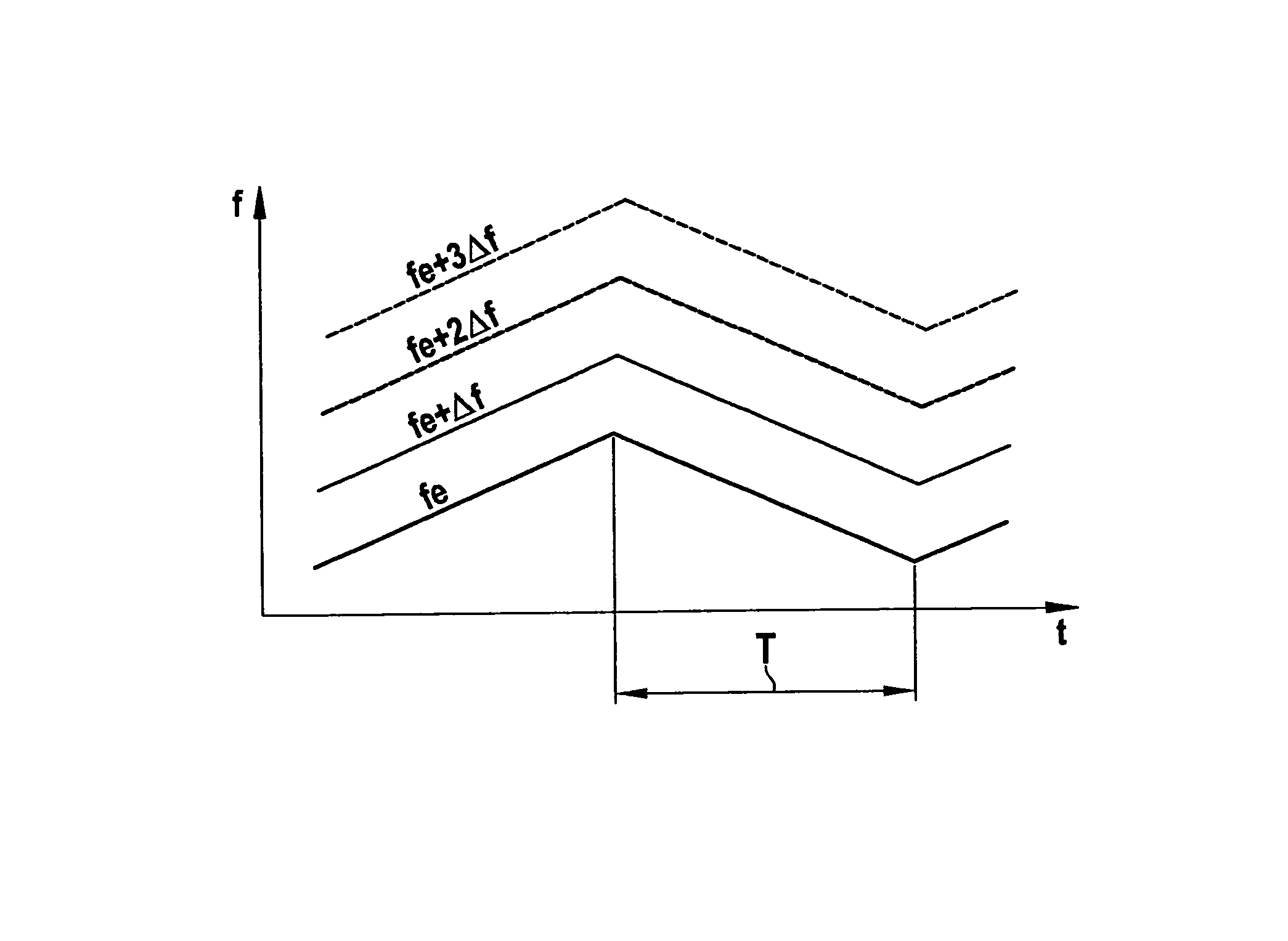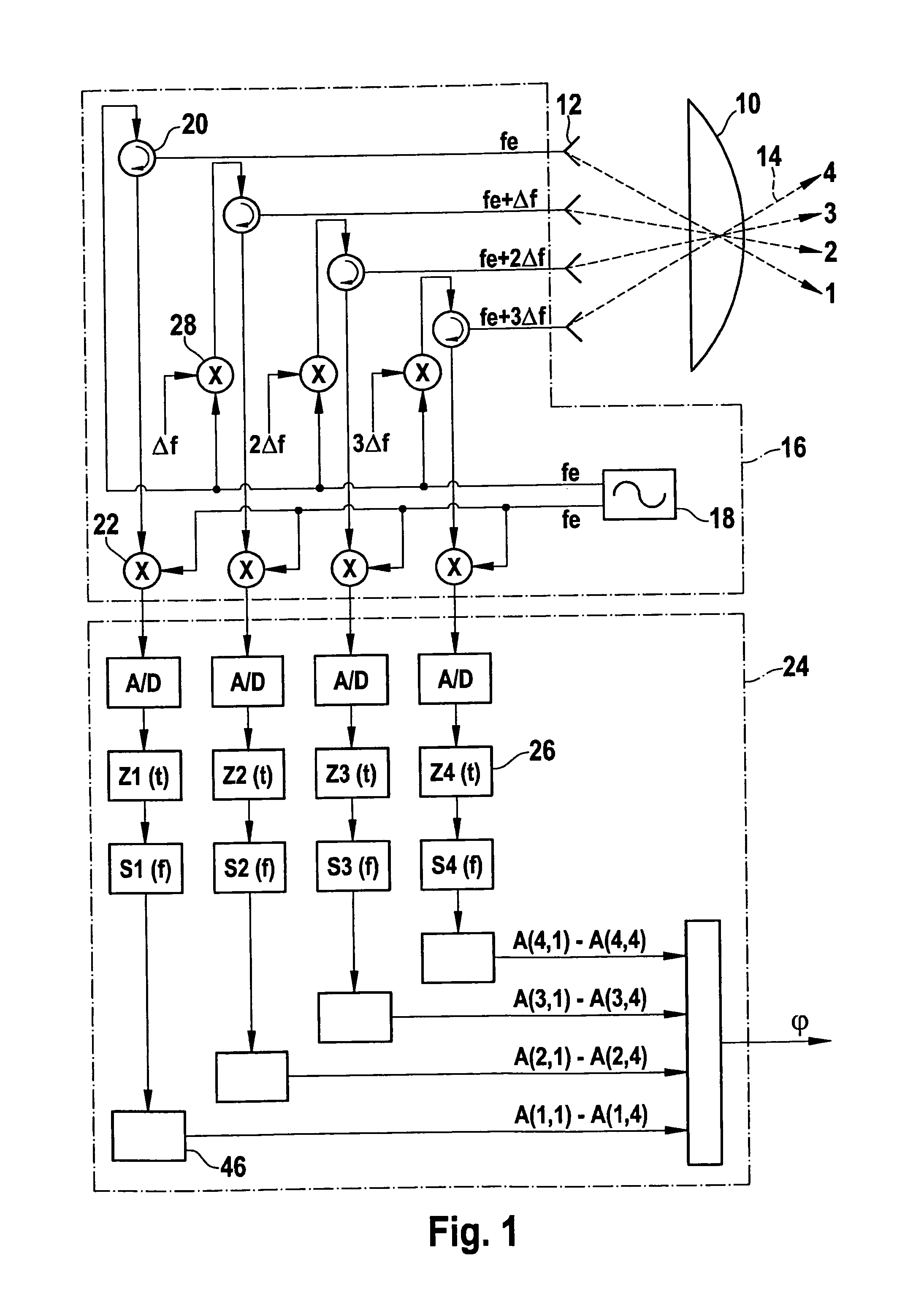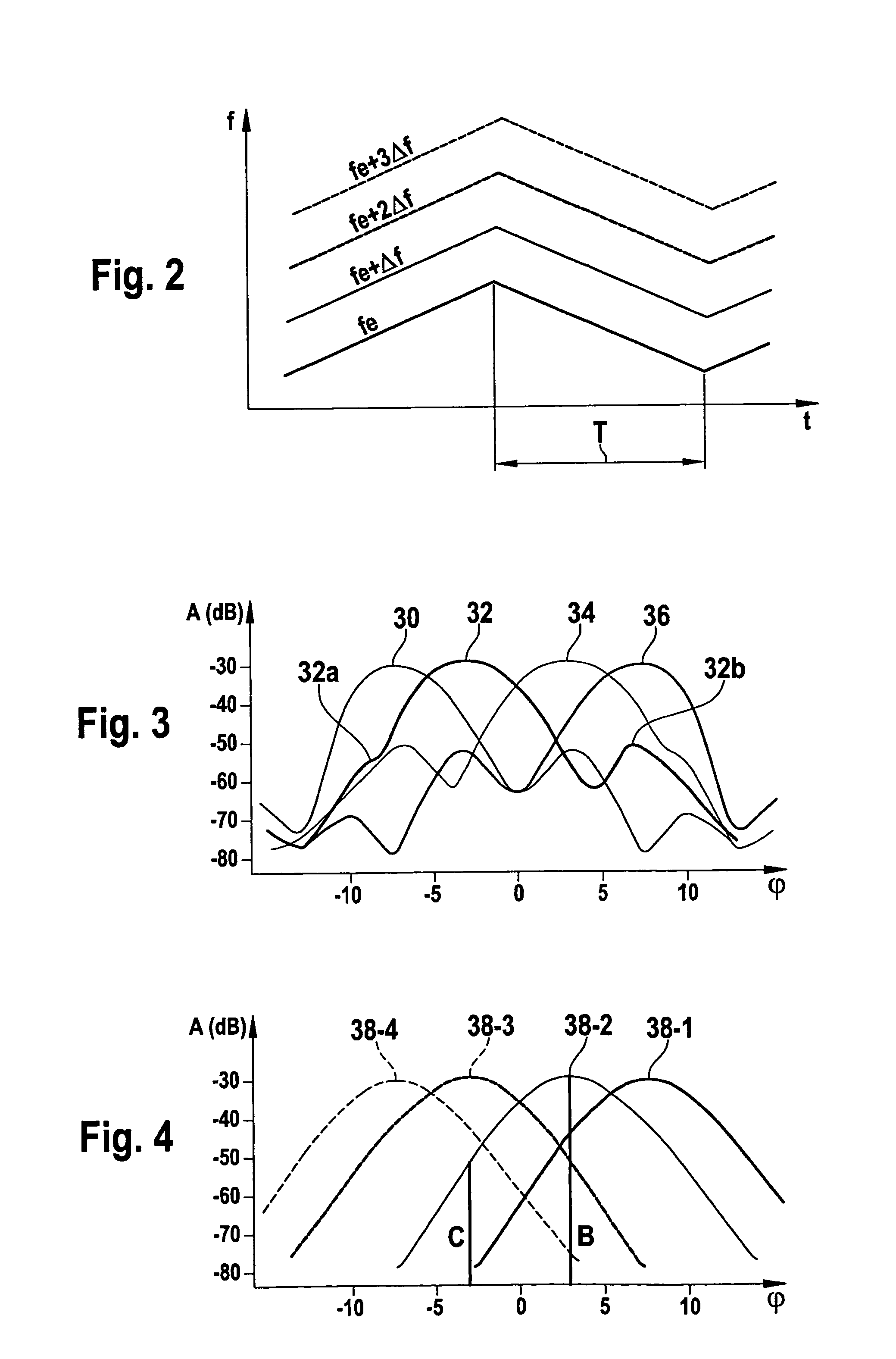Angular resolution radar sensor
a radar sensor and angular resolution technology, applied in the field of radar sensors, can solve the problems of inability to contribute to the formation of secondary lobes of couplings between these signals, inability to separate inability to achieve the separation of signals in the spectrum, so as to simplify the construction of evaluation devices and improve the angular resolution. , the effect of simplifying the cost-effective construction
- Summary
- Abstract
- Description
- Claims
- Application Information
AI Technical Summary
Benefits of technology
Problems solved by technology
Method used
Image
Examples
Embodiment Construction
[0031]FIG. 1 shows the basic construction of an angular resolution FMCW radar sensor having a lens 10, in the focal plane of which four antenna elements 12, e.g., patch antennas, are situated at a varying offset with respect to the optical axis of lens 10. Antenna elements 12 thus produce radar beams 14, which are bundled by lens 10 and then emitted in different directions. Each antenna element 12 is part of one channel of the radar sensor. For differentiation, the channels are numbered consecutively by numerals 1-4 on the associated radar beams 14.
[0032]A transmitting and receiving element 16 has a local oscillator 18 (VCO; voltage controlled oscillator), which generates a microwave signal having a base frequency fe of 76 GHz for example. For channel 1, this base frequency signal is fed via a circulator 20 directly into associated antenna element 12. The signal received from this antenna element is separated from the fed-in signal by circulator 20 and is then mixed in a mixer 22 wi...
PUM
 Login to View More
Login to View More Abstract
Description
Claims
Application Information
 Login to View More
Login to View More - R&D
- Intellectual Property
- Life Sciences
- Materials
- Tech Scout
- Unparalleled Data Quality
- Higher Quality Content
- 60% Fewer Hallucinations
Browse by: Latest US Patents, China's latest patents, Technical Efficacy Thesaurus, Application Domain, Technology Topic, Popular Technical Reports.
© 2025 PatSnap. All rights reserved.Legal|Privacy policy|Modern Slavery Act Transparency Statement|Sitemap|About US| Contact US: help@patsnap.com



